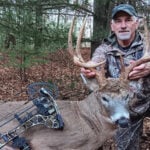You can’t be a good turkey hunter without knowing how to call turkeys. And you can’t call turkeys if you don’t know what each vocalization means. If you’re among those who want to learn the meaning behind the call, this article is for you.
Turkey Vocabulary
PLAIN YELPS
The yelp is the most basic call. Knowing this, realize that it is also a multi-purpose call, with several possible variations. This call consists of three to 10 single-note vocalizations. Each of which are evenly spaced in rhythmical fashion. This is the most common call heard in the turkey woods and the one call that every hunter should master. Many have deemed it “the seducer.” Simply because it is the most commonly used call a hen will make when searching for a gobbler.
A common misconception is the hen alone can yelp. This is simply not true. Both the jake and the tom utilize this call. The tom and jake yelp are slower in frequency. Also, the sound is much deeper and raspier in tone than that of a hen.
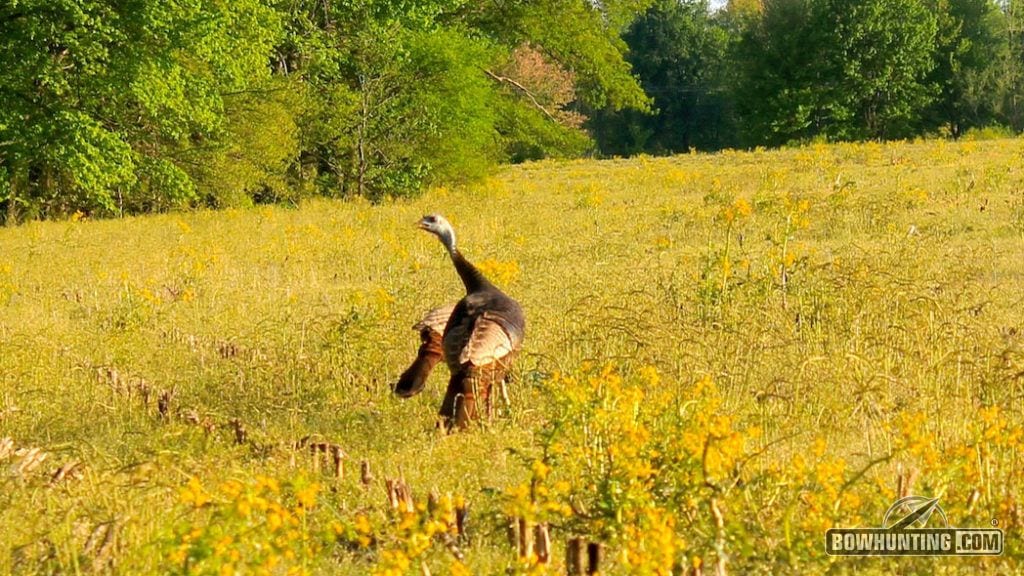
Learn how to call turkeys…sound like her…and you’ll kill more gobblers, guaranteed.
CLUCKING
The cluck can be a very productive call if used correctly. Reason being, there is a very slight distinction separating the cluck and the “putt.” The putt is an alarmed call which we will cover momentarily.
The cluck consists of one or more short notes. This call is often used to gain the attention, or the affection, of another bird. A hunter can even use this call to reassure a tom that has hung up out of range. Overall, this is a very common call and is used as much by the wild turkey as is the yelp.
Cutts & Putts
CUTTING
Cutting is a call that consists of yelps mixed with excited clucks. It is several loud notes that are very short in frequency. A cutting hen yelp is bold and aggressive. Often, it comes from a hen in search of a companion. If a gobbler has gone silent after a series of responses, this call can often times be used to fire him back up. Ultimately, this is an enhanced version of the yelp. However, use this call with caution. Too much of its use can turn off a passive, more subordinate tom.
THE PUTT
Let us hope that this is one sound that does not befall you this season. That is, unless it’s from the
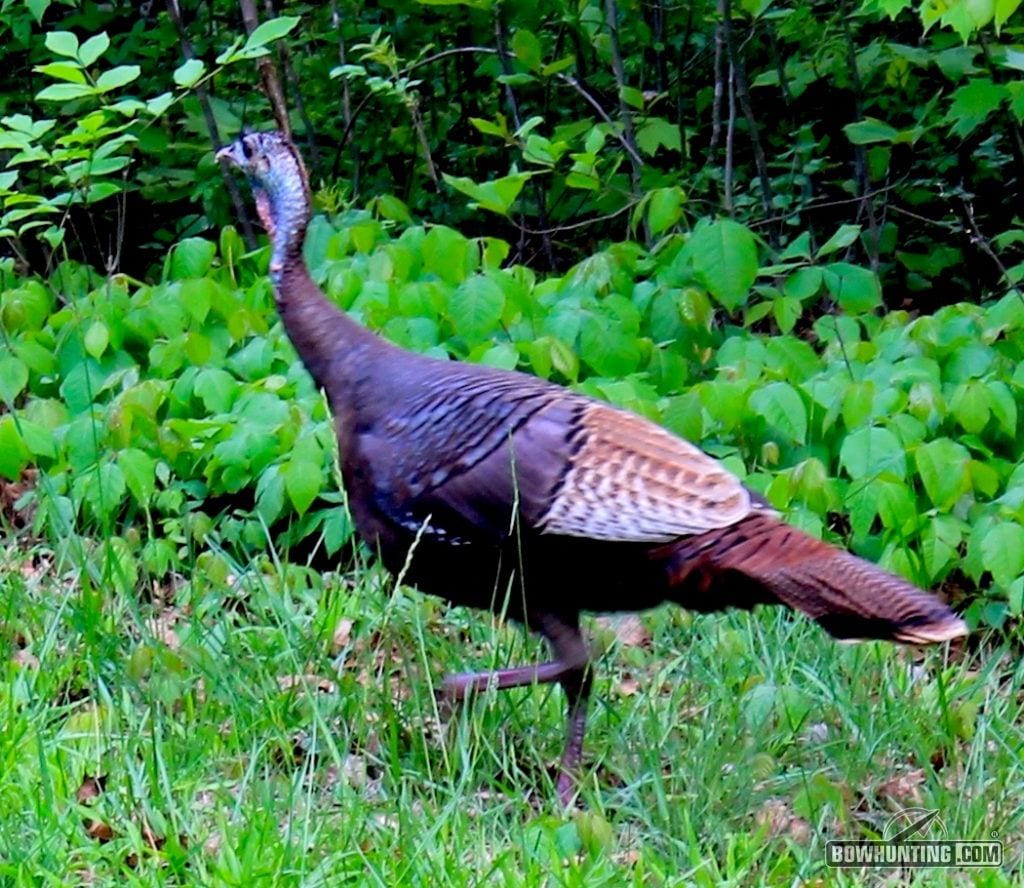
Learn the difference between a cluck and a putt. One says, “It’s all good,” and one says, “Run for your life!”
looker that will come in with the strutter you torch. The putt is much the same as a deer blowing. When a turkey putts, it has either seen or heard something that it associates with danger. It may vary from one to several sequential notes. All of which will be very short in length.
The audible differences between it and the cluck previously mentioned are minimal. Yet once again they carry completely opposite messages. The putt is a very sharp, high-pitched vocalization. Whereas the cluck is lower pitched, usually including soft yelps between. The putt will only include the single, excited pitch with several seconds between intervals.
PURR AND CLUCK AND PURR
The purr is debatably the most soothing of calls. It often is emitted from a bird that is content.
Oftentimes, this will be heard while the flock is feeding. Most would describe it as a “fluttering” sound. A good tip to remember is to use this when other birds are in close proximity. This call can be your ticket to luring that long beard in the last few yards. Keep in mind that these are short, not long and drawn out segments. They can, however, be used one after the other. Just remember to keep each wavelength short, preferably each lasting no more than one second.
The purr can also be used in conjunction with a cluck to produce the cluck and purr. This call is a variation of the two. It too shows a feeling of contentment. But also exhibits a welcoming tune to its call as well. The call is made with cluck and purrs joined into the same sequence. They are annunciated just as they would be if used alone. Only now, there will not be yelps that coincide with the cluck.
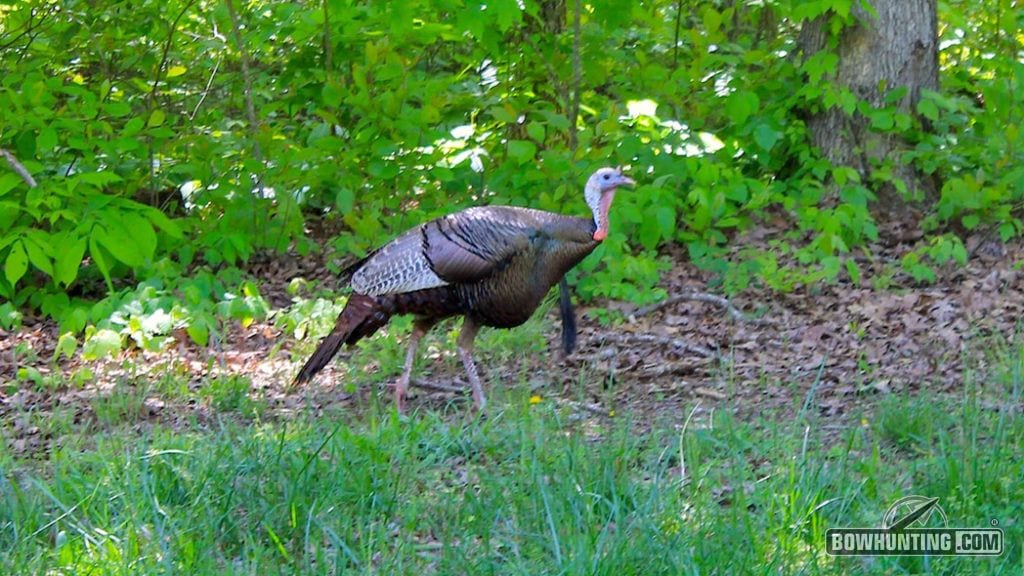
Learn how to call turkeys and the reward will be a longbeard within bow range.
Turkey Fight
FIGHTING PURR
The fighting purr is a call heard when turkeys are fighting for dominance and the right to breed. It can be heard year-round, but predominately occurs while the pecking order is being established in late winter and early spring. When emitted, this call consists of short, quick bursts of purrs, carrying more aggression and temperament than the normal purr. Generally, when this is heard, it is coming from multiple birds at the same time.
THE KEE-KEE AND KEE-KEE RUN
The kee-kee is an interesting call. Most would describe it as a whistle; or that of someone saying in a high voice, “Pee-pee-pee-pee.” It is generally always emanated from that of a young turkey often used when lost or separated from the flock. Despite this, in some cases, certain variations may be heard from that of a mature bird.
The kee-kee run is the same as the kee-kee with a little bit of an add-on. The only difference is the addition of a couple short yelps at the end. It would sound similar to this, “Kee-kee-kee-yelp-yelp.” This call can be super effective in firing up big mature birds that will not respond to anything else. However, it is looked at as the most difficult of calls to master. So allow plenty of practice before voicing this in the field.
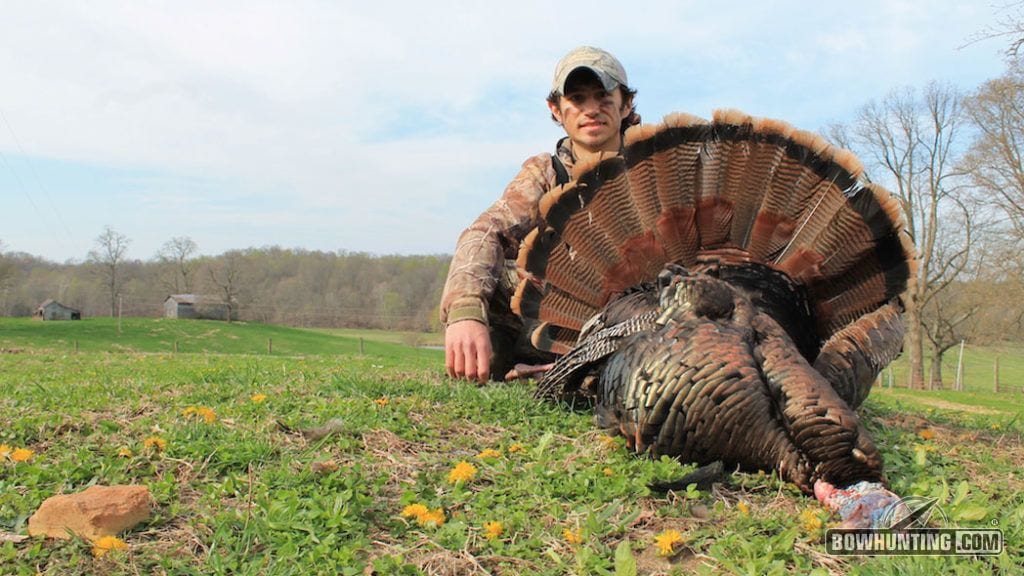
The author spoke the language and brought this bird to the decoys.
TREE CALL/ FLY -DOWN CACKLE
The tree call is a simple sound that is heard while the turkey is still on the roost. It is a series of very soft yelps. As daylight gets closer, the yelps increase in volume. Once the bird is ready to fly down, they will momentarily cease vocalizations. Then as they sail from their overnight stay, they proceed with the fly-down cackle.
The fly-down cackle is a very fast and sharp call that the turkey makes while it is in route to the ground. It starts out as sharp clucks, then to cuts, and winds out as short, choppy yelps upon landing. This call can be mimicked to trick a gobbler into believing a flock slipped in under his radar the afternoon before.
THE GOBBLE
Finally, we make it to the sound of spring. The sound we crave for ten months out of the year until it finally arrives. Obviously, this is going to be one that demands little explanation. But gobblers use this to voice their presence to hens, as well as other toms and jakes. You can mimic it with mouth, box, and tube calls.
Watch the video below from our friends at Growing Deer TV for a great look at the sights and sounds of turkey talk.

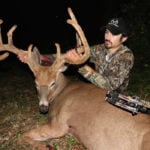 By
By 


